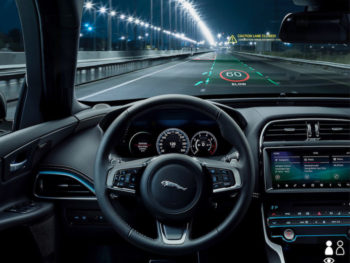Next-gen JLR 3D head-up display could improve driver reaction times
Jaguar Land Rover is working on a next-generation head-up display system that has the potential to improve reaction times to road hazards significantly.

The technology could project driver safety information ahead of the driver with the potential to improve reaction times to road hazards significantly
Part of the carmaker’s work on its Destination Zero roadmap – which has the goal of zero emissions, zero accidents and zero congestion – the system uses new 3D technology that can project driver safety information – such as lane departure, hazard detection, sat nav directions – and use augmented reality to map the messages directly onto the road ahead. The work is being undertaken in partnership with the Centre for Advanced Photonics and Electronics (CAPE) at University of Cambridge and will allow drivers to react faster to hazards and prompts.
According to studies previously conducted in Germany, such Stereoscopic 3D displays in an automotive setting can improves reaction times on ‘popping-out’ instructions and increase depth judgments while driving.
The same technology could also be enable ride sharers to stream 3D movies direct from their seats in fully autonomous cars.
Valerian Meijering, human machine interface & head-up display researcher for Jaguar Land Rover, said: “Development in virtual and augmented reality is moving really quickly. This consortium takes some of the best technology available and helps us to develop applications suited to the automotive sector. Not only does it provide a much richer experience for customers, but it also forms part of our Destination Zero roadmap; helping us to move towards a safer, more intuitive and smarter future, for everybody.”

